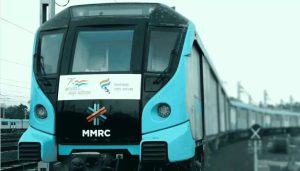Navi Mumbai International Airport Set to Transform India’s Economic Landscape

Navi Mumbai, 18th December 2024: The Navi Mumbai International Airport (NMI) is poised to revolutionize India’s economic landscape. With its upcoming launch, the airport will soon welcome travellers from around the world.
Currently, Chhatrapati Shivaji Maharaj International Airport operates at full capacity, causing delays and inefficiencies. Navi Mumbai will serve as a secondary hub to alleviate this pressure.
The first passenger terminal is set to begin operations next year, with an initial capacity to serve 20 million passengers annually.
Upon completion of all phases, the airport’s design, featuring three interconnected terminals, will handle up to 90 million passengers each year, meeting future demand projections.
The terminal’s design by Zaha Hadid Architects (ZHA) showcases organic curves and lotus-inspired forms, symbolizing India’s national flower and reflecting its cultural heritage.
With two parallel runways, the airport is built for operational efficiency, facilitating smooth takeoffs and landings while supporting future air traffic growth.
Navi Mumbai is envisioned as a comprehensive transport hub, integrating air, rail, metro, and other regional transport links, including:
– Navi Mumbai Metro Line 1
– Planned Mumbai Metro Line 8
– Mumbai-Hyderabad High-Speed Rail Line, under development
Enhanced Passenger Experience:
By decentralizing operations, the airport aims to reduce delays, eliminate bottlenecks, and improve overall connectivity for passengers travelling to and from the airport.
Increased Air Travel Capacity:
Once completed, the airport will accommodate rising passenger demand, with the capacity to handle 90 million passengers annually.
Better Connectivity:
A multi-modal transport network will ensure easy transfers between air, rail, and metro, providing seamless access to both domestic and international destinations.
Relief for Existing Airport’s Capacity:
Navi Mumbai will complement the existing airport, easing congestion and ensuring air traffic is spread across two major hubs.
Economic Growth and Employment:
The construction of the Navi Mumbai International Airport will generate job opportunities during both its development and operational phases, stimulating local economic growth by connecting Mumbai to global markets.
World-Class Infrastructure and Design:
The airport’s design blends functionality with aesthetic appeal, offering a modern gateway that also honours India’s cultural heritage.
Integration with Future High-Speed Rail:
The planned high-speed rail connections will provide passengers with faster, more efficient travel, improving regional mobility.
By providing world-class international services, Navi Mumbai International Airport will enhance global connectivity, supporting tourism and business while improving access to Mumbai and its surrounding regions.








